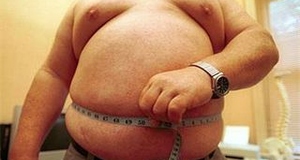From Discussions VOL. 11 NO. 2Does BMI Affect Diagnostic Efficacy of Computer Aided Diagnostic Software in the Identification of Malignant Pulmonary Nodules in Dual Energy Subtracted Chest Radiographs?ResultsDemographic and radiologic data was obtained on a total of 53 patients. Thirty patients had CT and pathology verified malignant pulmonary nodules and twenty-three were identified as malignant nodule free by CT. Overall, there were 24 females and 29 males. Sixteen females and seventeen males had malignant nodules and eight females and twelve males were in the non-malignant group. This distribution by gender was not significantly different by Chi- Square (χ2=0.1, p=0.75). The number of both ROI and FP did not differ by gender, (0.24 For all patients, the diagnostic efficacy of CAD in the detection of malignant pulmonary nodules was: Sensitivity=81.8%, Specificity=60.0%. For Normal patients: Sensitivity=80.0%, Specificity=72.7%. For OOMO patients: Sensitivity= 83.3% but Specificity was reduced to 44.4%. There was no significant difference between Normal and OOMO patients in the Sensitivity of CAD in detecting malignant nodules (80.0% vs 83.3%; p=0.94). The difference in Specificity between the Normal and OOMO patients approached significance (p=0.09) using the one tailed equality of proportions test (Z=-1.3). Similarly, in normal patients, BMI and the number of ROI were nearly significantly correlated (ρ=0.374, p=0.06) while there was no significant correlation between BMI and ROI for OOMO patients, (p=0.45). For either the BMI or OOMO group, there was no significant correlation between BMI and the number of false positive markings. ConclusionsThis pilot study did not find a statistically significant difference in the Specificity of malignant pulmonary nodule detection between the Normal and OOMO BMI groups. However, while there was no statistically significant difference in Sensitivity between the Normal and OOMO groups, a reduction in Specificity from 72.7% in the Normal group to 44.4% in the OOMO group is likely a clinically significant difference. The presence of obesity in a patient appears to obscure the ability of CAD to correctly identify the absence of malignant pulmonary nodules in OOMO patients, possibly increasing the number of false positive markings in this group. While the use of CAD in the detection of malignant pulmonary nodules in digital chest radiographs was designed to supplement the diagnostic capability of thoracic radiologists, decreased diagnostic efficacy in obese patients may limit the utility of this technology. Further, both the statistical tests for differences in proportions for Specificity between the OOMO and Normal BMI groups and significant rank correlation between the ROI and BMI for the normal group approached significance, suggesting that obesity may cause a statistically valid decrease in the diagnostic efficacy of CAD in patients with increased levels of obesity. The results of this study were limited by the small number of patients available during the study timeframe, particularly in the obese and morbidly obese BMI groups. A study with a larger number of patients, particularly in these two BMI groups may provide more insight and a more accurate view of this apparent discrepancy. Since obesity has already been found to affect the ability of radiologists to accurately identify physiological landmarks, interpret test results and utilize specific procedures in diagnostic radiology, the determination of whether or not the diagnostic efficacy of CAD is altered by increased levels of obesity in evaluating digital chest radiographs for malignant pulmonary nodules seems to be a pertinent and timely question that should be investigated further. AcknowledgementsI would like to thank my research advisor, Dr. Scott Simpson at the Case Western Reserve University Department of Anatomy who guided me throughout this research project. In addition, I would like to thank Dr. Robert Gilkeson at the University Hospitals Department of Radiology for his assistance. I would also like to thank the Case Western Reserve University Phi Beta Kappa chapter for their award of a Student Research Grant to assist in the completion of my project. ReferencesAmbardar, S., Cabot, J., Cekic, V., Baxter, K., Arnell, T. D., Forde, K. A., … Whelan, R. L. (2009). Abdominal wall dimensions and umbilical position vary widely with BMI and should be taken into account when choosing port locations. Surgical Endoscopy, 23(9), 1995–2000. doi:10.1007/ s00464-008-9965-1 Balkman, J. D., Mehandru, S., DuPont, E., Novak, R. D., & Gilkeson, R. C. (2010). Dual energy subtraction digital radiography improves performance of a next generation computer-aided detection program. J Thorac Imaging, 25(1), 41–47. Bley, T. A., Baumann, T., Saueressig, U., Pache, G., Treier, M., Schaefer, O., … Kotter, E. (2008). Comparison of radiologist and CAD performance in the detection of CT-confirmed subtle pulmonary nodules on digital chest radiographs. Invest Radiol, 43(6), 343–348. Buckley, O., Ward, E., Ryan, A., Colin, W., Snow, A., & Torreggiani, W. C. (2009). European obesity and the radiology department. What can we do to help? European Radiology, 19(2), 298–309. doi:10.1007/s00330- 008-1154-z Carboni, G. P., Sedati, P., & De Marco, E. (2013). Pitfalls and bugs of nuclear and CT cardiac scans in an extremely obese patient: reasons for using conventional coronary angiography as first-line test. Case Reports, 2013(may17 1), bcr2013009631–bcr2013009631. doi:10.1136/bcr-2013- 009631 Kasai, S., Li, F., Shiraishi, J., & Doi, K. (2008). Usefulness of computeraided diagnosis schemes for vertebral fractures and lung nodules on chest radiographs. AJR Am J Roentgenol, 191(1), 260–265. Kobayashi, T., Xu, X. W., MacMahon, H., Metz, C. E., & Doi, K. (1996). Effect of a computer-aided diagnosis scheme on radiologists’ performance in detection of lung nodules on radiographs. Radiology, 199(3), 843–848. Larson, T. C., Franzblau, A., Lewin, M., Goodman, A. B., & Antao, V. C. (2014). Impact of Body Mass Index on the Detection of Radiographic Localized Pleural Thickening. Academic Radiology, 21(1), 3–10. doi:10.1016/j.acra.2013.09.014 Li, F., Engelmann, R., Metz, C. E., Doi, K., & MacMahon, H. (2008). Lung cancers missed on chest radiographs: results obtained with a commercial computer-aided detection program. Radiology, 246(1), 273–280. Li, F., Hara, T., Shiraishi, J., Engelmann, R., MacMahon, H., & Doi, K. (2011). Improved detection of subtle lung nodules by use of chest radiographs with bone suppression imaging: receiver operating characteristic analysis with and without localization. AJR Am J Roentgenol, 196(5), W535–41. Meziane, M., Obuchowski, N. A., Lababede, O., Lieber, M. L., Philips, M., & Mazzone, P. (2011). A comparison of follow-up recommendations by chest radiologists, general radiologists, and pulmonologists using computer-aided detection to assess radiographs for actionable pulmonary nodules. AJR Am J Roentgenol, 196(5), W542–9. Monnier-Cholley, L., Carrat, F., Cholley, B. P., Tubiana, J. M., & Arrive, L. (2004). Detection of lung cancer on radiographs: receiver operating characteristic analyses of radiologists’, pulmonologists’, and anesthesiologists’ performance. Radiology, 233(3), 799–805. Oda, S., Awai, K., Suzuki, K., Yanaga, Y., Funama, Y., MacMahon, H., & Yamashita, Y. (2009). Performance of radiologists in detection of small pulmonary nodules on chest radiographs: effect of rib suppression with a massive-training artificial neural network. AJR Am J Roentgenol, 193(5), W397–402. Rajapakse, C. S., & Chang, G. (2014). Impact of Body Habitus on Radiologic Interpretations. Academic Radiology, 21(1), 1–2. doi:10.1016/j. acra.2013.10.006 Reynolds, A. (2011). Obesity and medical imaging challenges. Radiologic Technology, 82(3), 219–239. Shah, P. K., Austin, J. H., White, C. S., Patel, P., Haramati, L. B., Pearson, G. D., … Berkmen, Y. M. (2003). Missed non-small cell lung cancer: radiographic findings of potentially resectable lesions evident only in retrospect. Radiology, 226(1), 235–241. Szucs-Farkas, Z., Patak, M. A., Yuksel-Hatz, S., Ruder, T., & Vock, P. (2010). Improved detection of pulmonary nodules on energy-subtracted chest radiographs with a commercial computer-aided diagnosis software: comparison with human observers. Eur Radiol, 20(6), 1289–1296. Twaij, A., Sodergren, M. H., Pucher, P. H., Batrick, N., & Purkayastha, S. (2013). A Growing Problem: Implications of Obesity on the Provision of Trauma Care. Obesity Surgery, 23(12), 2113–2120. doi:10.1007/s11695- 013-1093-x Uppot, R. N. (2007). Impact of Obesity on Radiology. Radiologic Clinics of North America, 45(2), 231–246. doi:10.1016/j.rcl.2007.03.001 Suggested Reading from Inquiries Journal
Inquiries Journal provides undergraduate and graduate students around the world a platform for the wide dissemination of academic work over a range of core disciplines. Representing the work of students from hundreds of institutions around the globe, Inquiries Journal's large database of academic articles is completely free. Learn more | Blog | Submit Latest in Biology |


















